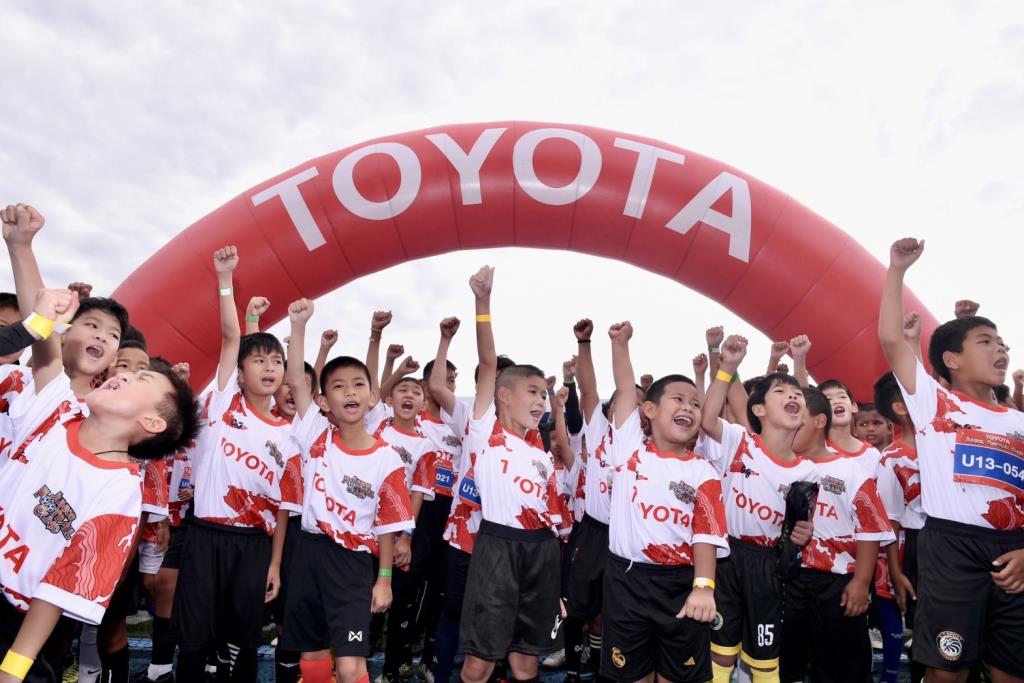“Youth Football Development in South Korea: A Rising Force on the Global Stage
Related Articles Youth Football Development in South Korea: A Rising Force on the Global Stage
Youth Football Development in South Korea: A Rising Force on the Global Stage

South Korea, a nation renowned for its technological prowess and cultural vibrancy, has also emerged as a significant player in the world of football. While the senior national team has consistently qualified for the FIFA World Cup and achieved notable successes, the foundation of this progress lies in the nation’s robust and evolving youth football development system. This article delves into the intricacies of youth football development in South Korea, examining its historical context, key stakeholders, challenges, and future prospects.
Historical Context: From Humble Beginnings to Rapid Growth
The history of football in South Korea dates back to the early 20th century, introduced by British sailors and missionaries. However, it was only after the Korean War that football began to gain widespread popularity. In the early years, youth football development was largely unstructured and informal, relying on the passion of local coaches and volunteers.
The establishment of the Korea Football Association (KFA) in 1933 marked a crucial step towards formalizing the sport. However, significant investment in youth development was limited until the late 20th century. The nation’s co-hosting of the 2002 FIFA World Cup served as a catalyst for a renewed focus on youth football. The success of the national team in reaching the semi-finals ignited a nationwide fervor for the sport, leading to increased government funding, private investment, and a greater emphasis on developing young talent.
Key Stakeholders: A Collaborative Ecosystem
The development of youth football in South Korea involves a complex network of stakeholders working in concert. These include:
- Korea Football Association (KFA): As the governing body for football in South Korea, the KFA plays a pivotal role in setting the strategic direction for youth development. The KFA is responsible for designing and implementing national youth programs, setting standards for coaching education, and organizing youth leagues and tournaments.
- Government: The South Korean government, through the Ministry of Culture, Sports, and Tourism, provides significant funding for youth sports development, including football. Government support is crucial for building infrastructure, supporting coaching education, and providing scholarships for talented young players.
- Professional Clubs: The K League, South Korea’s professional football league, has become increasingly involved in youth development. Most K League clubs operate youth academies that provide intensive training and education for promising young players. These academies serve as a vital pathway for young players to progress to the professional level.
- Schools and Universities: Schools and universities play a crucial role in providing opportunities for young players to participate in football. Many schools have football teams that compete in local and national tournaments. Universities also offer scholarships for talented football players, allowing them to pursue their education while continuing to develop their football skills.
- Private Academies: In addition to the K League academies, numerous private football academies have emerged across South Korea. These academies offer specialized training programs for young players of all ages and skill levels. While some private academies are excellent, others have been criticized for prioritizing profit over player development.
- Parents: South Korean parents are known for their strong commitment to their children’s education and extracurricular activities. Many parents invest significant time and money in supporting their children’s football aspirations. However, the pressure from parents can sometimes be detrimental to young players’ enjoyment of the game.
The Structure of Youth Football Development

The youth football development system in South Korea is structured around age groups, with programs designed to cater to the specific needs of players at different stages of development. The main levels are:
- Elementary School (U-12): At this level, the focus is on introducing young children to the game and developing their fundamental skills. The emphasis is on fun, participation, and creating a love for football.
- Middle School (U-15): This level marks a transition towards more structured training and competition. Players begin to specialize in specific positions, and the focus shifts towards developing tactical awareness and teamwork.
- High School (U-18): High school football is highly competitive in South Korea. Many high schools have strong football programs that serve as a breeding ground for future professional players.
- University: University football provides a pathway for players to continue their development while pursuing higher education. Many university teams are highly competitive, and some players are scouted by professional clubs.
Key Features of the South Korean Youth Football System
Several key features distinguish the South Korean youth football system:
- Emphasis on Technical Skills: South Korean coaches place a strong emphasis on developing players’ technical skills, such as passing, dribbling, and shooting. The focus is on creating technically proficient players who are comfortable on the ball.
- Discipline and Hard Work: South Korean culture values discipline and hard work, and these values are reflected in the youth football system. Players are expected to train hard, follow instructions, and respect their coaches and teammates.
- Teamwork and Collective Play: South Korean football emphasizes teamwork and collective play. Coaches encourage players to work together, support each other, and prioritize the team’s success over individual glory.
- Competitive Environment: The youth football environment in South Korea is highly competitive. Players are constantly striving to improve and earn a spot on the team. This competitive environment can be both beneficial and detrimental, as it can motivate players to work harder but also create pressure and stress.
- Qualified Coaches: The KFA has invested heavily in coaching education, and there are now many qualified coaches working at all levels of youth football. These coaches are trained to develop players’ technical, tactical, physical, and psychological skills.
Challenges and Areas for Improvement
Despite the progress made in youth football development, South Korea still faces several challenges:
- Overemphasis on Winning: The pressure to win can sometimes overshadow the importance of player development. Coaches may prioritize short-term results over long-term growth, which can be detrimental to young players’ development.
- Lack of Creativity: While South Korean players are known for their technical skills and discipline, they are sometimes criticized for lacking creativity and spontaneity. Coaches need to encourage players to express themselves and take risks on the field.
- Burnout: The intense training and competition schedule can lead to burnout among young players. Coaches need to be mindful of players’ physical and mental well-being and ensure that they have adequate rest and recovery time.
- Inequality of Opportunity: Access to quality coaching and facilities is not always equal across the country. Players from disadvantaged backgrounds may not have the same opportunities as those from wealthier families.
- Need for More Game Time: Compared to some European countries, South Korean youth players may not get as much game time. This can limit their development and prevent them from gaining valuable experience.
Future Prospects: Building on Success
The future of youth football development in South Korea looks promising. The KFA is committed to continuing to invest in youth programs, coaching education, and infrastructure. The growing popularity of football in South Korea, coupled with the increasing involvement of professional clubs, is creating more opportunities for young players to develop their skills.
To further enhance youth football development, South Korea should focus on:
- Promoting a Player-Centric Approach: Prioritizing player development over winning and creating a fun and supportive environment.
- Encouraging Creativity and Innovation: Allowing players to express themselves and take risks on the field.
- Addressing Burnout: Ensuring that players have adequate rest and recovery time and promoting a healthy balance between football and other activities.
- Expanding Access to Opportunities: Providing equal access to quality coaching and facilities for all players, regardless of their background.
- Increasing Game Time: Providing more opportunities for players to compete in meaningful games.
By addressing these challenges and building on its existing strengths, South Korea can continue to develop its youth football system and produce world-class players who can compete at the highest level. The nation’s commitment to youth development is not only shaping the future of South Korean football but also contributing to the growth and globalization of the sport worldwide. The journey of South Korean youth football is a testament to the power of dedication, investment, and a shared passion for the beautiful game.

